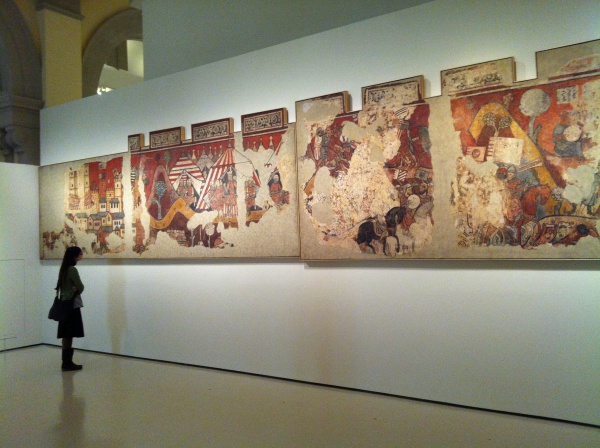Facts About Mural paintings of the conquest of Majorca
The Mural Paintings of the Conquest of Majorca are a captivating collection displayed at the National Art Museum of Catalonia in Barcelona, Spain. These artworks illustrate the historic conquest of Majorca led by James I the Conqueror in 1229 and serve as a quintessential example of early Gothic Catalan art. Unearthed in 1961 at the former residence of the Caldes family, the murals vividly narrate historical events based on detailed medieval Catalan records.
The creators of these frescoes were part of a Barcelona workshop that also contributed to various palaces in the city. The paintings exhibit stylistic affinities with other works from the Catalan Counties and the Iberian Peninsula, integrating Romanesque elements with a Franco-Gothic aesthetic. The themes are inspired by literary sources such as the *Llibre dels Feits* and the *Chronicle of Bernat Desclot*, which recount the conquest of Majorca in 1229.
Originally discovered in the Palau Aguilar, a medieval palace in Barcelona with a rich history, the murals are now preserved at MNAC. The three main panels depict scenes like the meeting of the Counts of Barcelona, the Battle of Porto Pi, and the Royal Camp's assault on the city of Majorca. These works belong to the military genre of historical painting, celebrating heroic deeds and significant historical episodes.
Dating from between 1285 and 1290, the murals showcase a linear Gothic style with meticulous attention to detail in both composition and storytelling. The iconography aligns with the tradition of illustrating military chronicles and legendary tales that were popular in the 13th century. These paintings combine historical fidelity with artistic interpretation, making them a cherished cultural and historical treasure.

 Portugal
Portugal